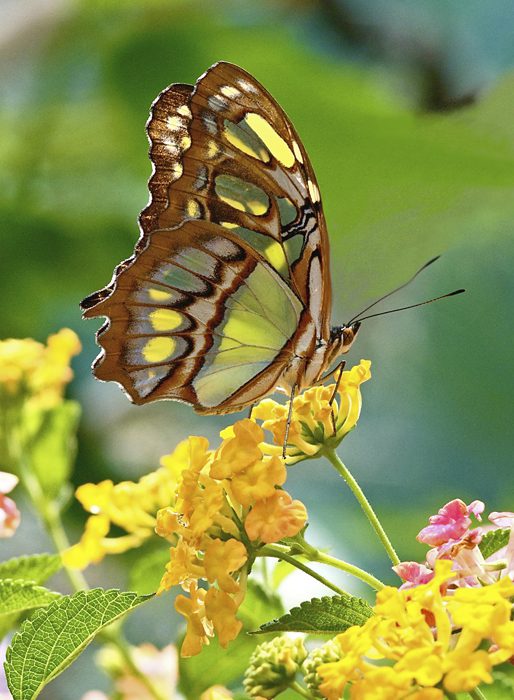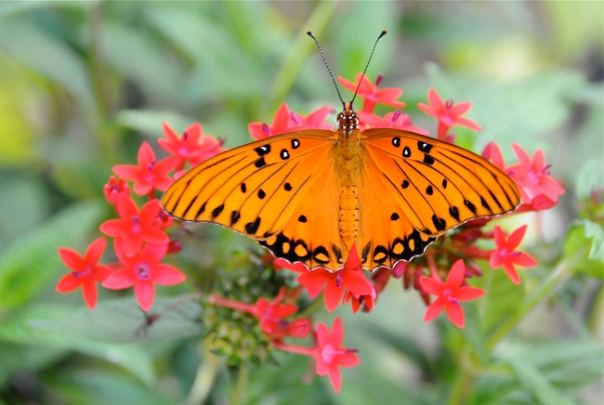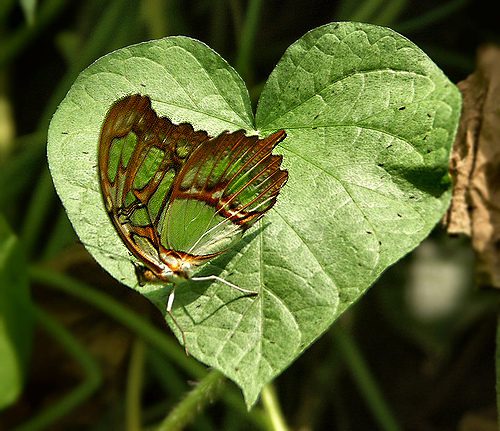
Butterfly
Tremendous beauty can be found in the tiniest of things… for who has ever thought to rival that of a butterfly’s wing ~ K. D’Angelo
Tremendous beauty can be found in the tiniest of things… for who has ever thought to rival that of a butterfly’s wing ~ K. D’Angelo
Butterfly
Breaths of air are taken in and a chrysalis cracks open. Out steps a newly emerged butterfly. Its wings are wet and crumpled, but soon they will begin to be pumped out and then dried. The butterfly will be free to fly off into a different dimension.
This new world contains many of the same dangers that the old one did, perhaps even more, but the butterfly is now armed with a new and improved body. It has…
Six legs and a set of wings, which can fly.
Compound eyes, which can see in every color and in every direction.
An antennae, which can smell extremely efficiently.
Feet which taste and a built in straw or proboscis (pro-boss-kiss) which can be used to drink up sweet nectar.
On their wings butterflies also flaunt a lovely mosaic of scales.
These scales are most important for many reasons. They absorb heat which helps to enable the butterflies to fly. They may also help a butterfly escape a sticky situation, such as a spider web, as they flake off quickly and make for an easy escape. But most importantly, they help the butterfly to converse or “Wing Talk”. Communicating with friends and foe alike is something a butterfly must do often.
Although contacting and flirting with a mate is of the utmost importance to a butterfly, staying alive takes priority. With the use of their “talking wings”, butterflies send out clever messages, which are most effective in keeping predators at bay.

Think of a stop sign or a caution sign. Bold and brightly colored, they get our attention by displaying hues such as orange, yellow, black, red and white. They remind us to “use caution” or warn us to “keep out” of an unsafe area.

Some butterflies also wear vibrantly colored “wings of warning”. Boldly they caution predators to stay away. In “wing talk” they say to the approaching dragonfly, “It would be hazardous to your health to come near me!”

While certain species use brilliantly colored wings to defend themselves, others would rather play it safe with good old fashion camouflage or disguise. Mother Nature has been quite creative when it comes to using butterflies scales for these purposes. Some of the designs that have formed over time are down right amazing. These “Talking Wings” say such things as I am not a butterfly…
I am a green leaf

I am a dry leaf

I am invisible,
I am not even here

I am a sunset,
I am light
I am a starry night sky…

I am anything but a butterfly!
To take this notion of disguise a step further, Mother Nature, has created some species which exhibit “false heads” complete with eye spots. Cleverly, these false heads are located on hind wings, far from the butterfly’s real head.
If a predator does decide to attack, it will usually follow its natural instinct to go for the head. In a case like this, a leaping lizard may find himself disappointed, when, after an attempted attack, all he ends up with is a bit of butterfly wing stuck in his mouth.
I am not a butterfly…
I am a large owl

I am a cat’s face

I am a threatening hawk

I am a pair of birds

I am a leopard
I am not a butterfly…
I am something to be feared!
The “flash and conceal” club is a group of butterflies that have wings that are vividly colored on the inner side and dully colored for camouflage on the outside.
These lucky butterflies, confuse predators with their two toned wings, and depending on the situation, they can either choose to camouflage themselves or display brightly colored warnings. Whatever the situation, their “talking wings” are effective in helping these butterflies to stay safe from predators.
I am not a butterfly! I am something else, something you’re afraid of. Don’t come near me!
When not defending themselves or finding nutrients to live on, most butterflies spend their time participating in the “dating game”.
For males the “name of the game” is to win over a female. There are several things a male must do to achieve this. Before a male even begins to seek out a mate he must collect and store a variety of nutrients. These he will offer as a “nuptial gift” to a prospective female.
When the male is ready to actually court a female, he must find one. Some males do this by setting up a territory, which they guard to keep other males out. Then they wait for a female to come by. Other males go out and actively search out their mates.
Often times they can be seen “hill topping” or “basking in the sun” as they show off their colors, hoping to attract a female.If a male successfully finds a female he must then court her. In an Ariel dance, he will try to sprinkle some “love dust” or pheromones onto her antennae to make her fall in love with him. Even if the male can successfully share his aphrodisiac, the female may still reject him. She may do this for a variety of reasons.
First and foremost, she may already be carrying fertilized eggs. Sorry Charlie. That the way the chips fall! Secondly, she may turn him away because his “nuptial gift” is not up to snuff and I do literally mean up to snuff!
It is thought that the female butterfly can smell whether the male’s dowry is acceptable! “Acceptable” means having a supply of nutrients large enough to consume 1/2 of his body weight. If the female decides the offering is not good enough she will reject the male by sticking her abdomen up in the air.
Sorry, guy. Better luck next time!
If and when male and female butterflies mate, they can be together for up to 9 hours. Isn’t love grand! Afterwards, the female and her fertilized eggs will be on their way. Having received the males “nuptial gift” she will have plenty of energy to properly fertilize and lay her eggs.
This quest will consume her, and it is unlikely that any other males will bother her, as her previous mate may have left her with either a blockage rendering her unable to mate again and or a chemical signaling that she is not desirable anymore.
Sorry honey, that’s the breaks, in ” The Butterfly Game of Love!”
After successfully mating with a female, the male butterfly will go back to collecting nutrients for his next affair. This propagation of species is the business, the game, of the male butterfly. “To love and be loved!”
Tremendous beauty can be found in the tiniest of things… for who has ever thought to rival that of a butterfly’s wing ~ K. D’Angelo




















